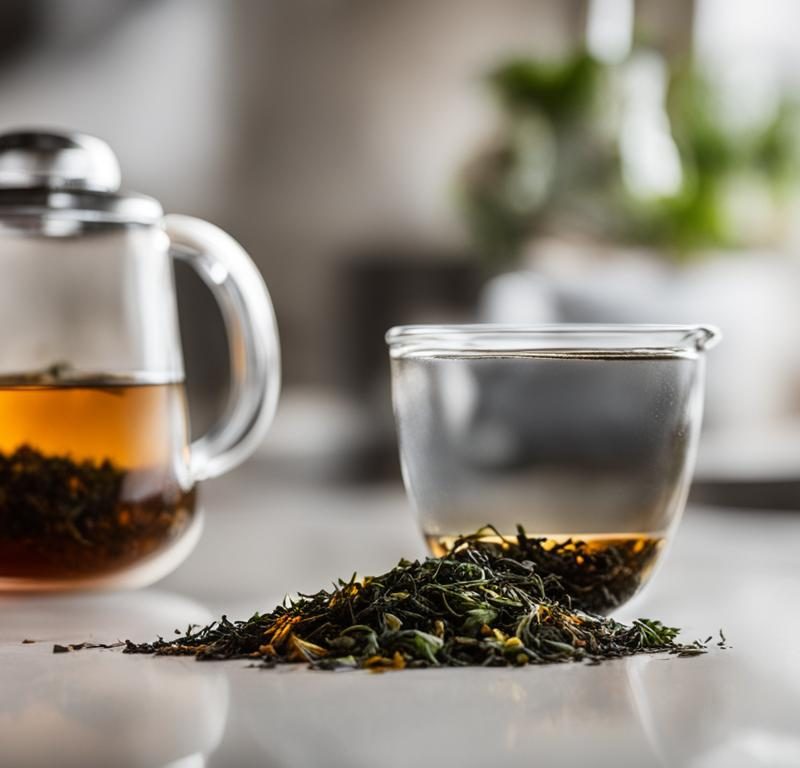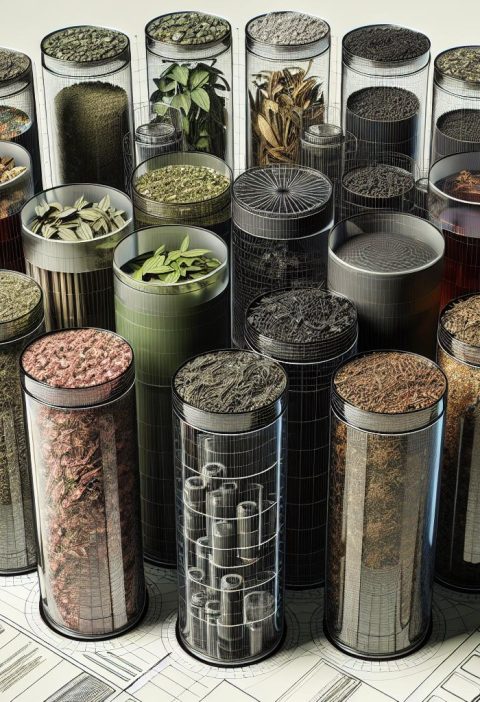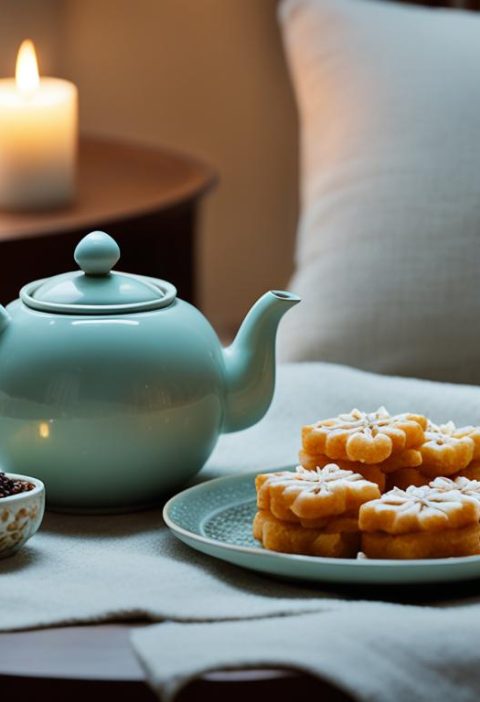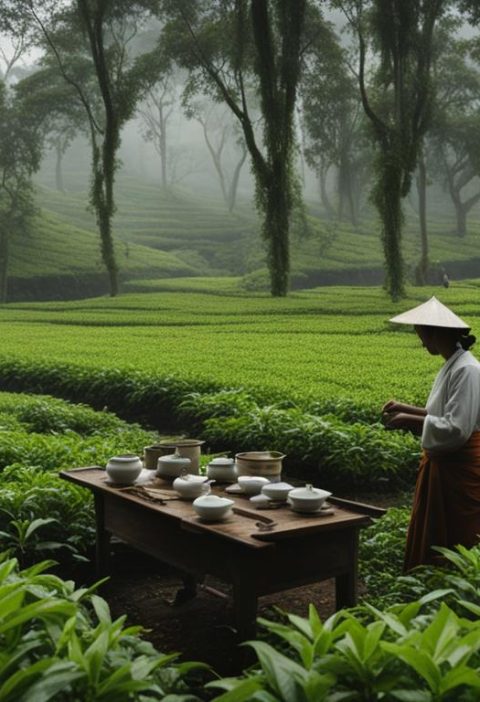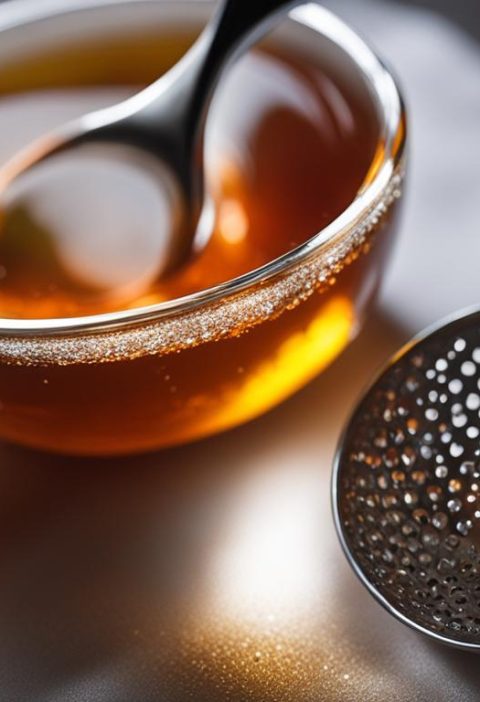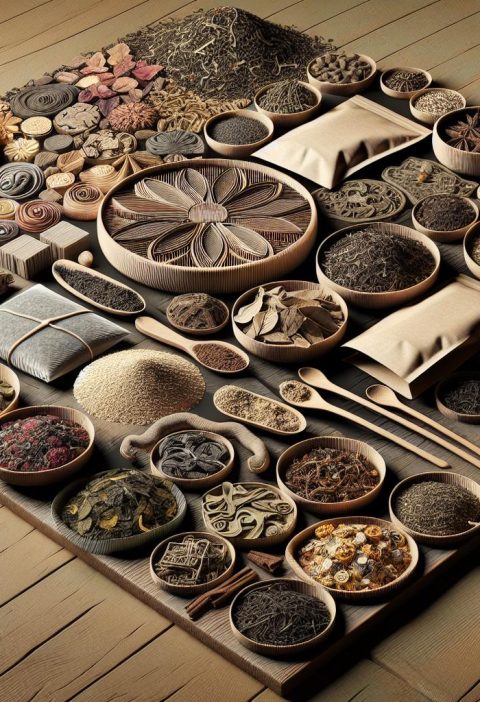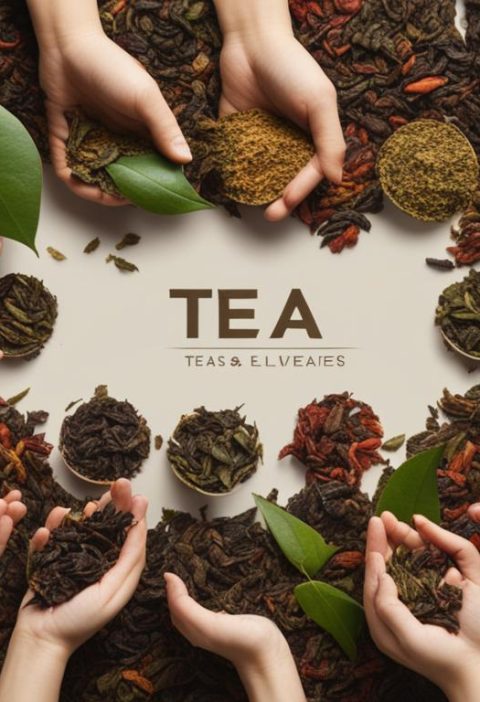Tea steeping can make or break the flavor and aroma of your brew. By avoiding common mistakes, you can ensure a perfect cup of tea every time. Let’s explore some of the most common tea steeping mistakes and how to avoid them.
Over- or Under-Steeping
One of the most intimidating aspects of tea steeping is getting the steeping times and temperatures right for each tea variety. While it’s important to follow the recommended ratios for different types of tea, it’s also important to remember that teas are forgiving. A few degrees or an extra minute won’t ruin your pot of tea, but over-steeping or under-steeping can impact the flavor and quality of your brew. We’ll provide guidelines for ideal steeping times and temperatures for different types of tea.
Adding Too Many Ingredients
While it’s tempting to add milk, lemon, cream, or sweeteners to your tea, it’s important to taste the tea in its pure form first. Adding too many ingredients can mask the true flavor of the tea and may not be necessary with high-quality loose-leaf tea. We’ll discuss the importance of tasting the tea naked and how to appreciate the natural flavors of your brew.
Using Poor Quality Water
Water makes up a significant portion of your tea, so using poor quality water can greatly impact the flavor and overall experience. While tap water can be used, filtering or using spring water can enhance the clarity and taste of your tea. We’ll explore the benefits of using high-quality water and how it can elevate the brewing process.
Microwaving
Microwaving tea is a common mistake that can result in a harsh, uneven extraction. The quick and intense temperature increase can damage the delicate tea leaves and affect the overall flavor. We’ll explain why slowly pouring hot water over the leaves is the preferred method for steeping tea and how it allows the leaves to release their flavors gradually.
Your Water is Too Hot
Using water that is too hot can lead to a bitter and less sweet taste in your tea. Different types of tea require different temperatures for optimal steeping. We’ll provide guidelines for the ideal water temperature for various types of tea, including green tea, black tea, and herbal tea.
You’re Steeping it for Too Long
Steeping tea for too long can result in a bitter taste as it releases tannins. Each type of tea has a recommended steeping time to achieve the perfect balance of flavor. We’ll outline the ideal steeping times for different types of tea, ensuring you get the best taste without any bitterness.
You’re Not Steeping it Long Enough
On the flip side, not steeping tea long enough can result in a weaker brew with less flavor and aromatic compounds. We’ll discuss the different stages of compound release during the steeping process and provide guidelines for the optimal steeping duration for different types of tea.
You’re Not Using Loose Leaf
While tea bags may be convenient, they often contain broken tea leaves, resulting in a less flavorful brew. Using loose-leaf tea allows for a fuller flavor experience, as essential oils are retained in the intact leaves. We’ll explain the benefits of using loose-leaf tea and alternative options for those who prefer the convenience of tea bags.
Squeezing Out Tea Bags
Squeezing tea bags to extract additional flavor is a common but misguided practice. It can actually make the tea more bitter and weaken the strength of the tea bags. We’ll delve into why squeezing tea bags is unnecessary and how it can adversely affect the taste of your tea.
Using the Wrong Type of Tea Bags
Not all tea bags are created equal. Some tea bags, such as plastic or bleached varieties, can release harmful chemicals into your brew. We’ll discuss the importance of choosing high-quality tea bags, such as non-bleached options, to ensure a chemical-free and flavorful tea experience.
Key Takeaways:
- Proper steeping times and temperatures are crucial for a flavorful cup of tea.
- Taste your tea in its pure form before adding any additional ingredients.
- Using high-quality water can enhance the taste and clarity of your tea.
- Avoid microwaving tea and opt for the slow pour method to preserve flavor.
- Know the ideal water temperature and steeping duration for different types of tea.
Over- or Under-Steeping
One of the most intimidating aspects of tea steeping is getting the steeping times and temperatures right for each tea variety. While it’s important to follow the recommended ratios for different types of tea, it’s also important to remember that teas are forgiving. A few degrees or an extra minute won’t ruin your pot of tea, but over-steeping or under-steeping can impact the flavor and quality of your brew.
When it comes to proper tea steeping techniques, it’s essential to find the right balance. Here are some best practices to ensure you steep your tea to perfection:
- Use a timer: To avoid over-steeping, always set a timer according to the recommended steeping time for your particular type of tea.
- Monitor the water temperature: Different teas require different water temperatures to bring out their best flavors. Use a thermometer or an electric kettle with temperature control to ensure you steep your tea at the ideal temperature.
- Experiment and adjust: Each tea variety may have its own unique steeping profile. Start with the recommended steeping time and temperature, but don’t hesitate to experiment and adjust according to your personal taste preferences.
- Consider the tea type: Black tea, green tea, oolong tea, and herbal tea may have different steeping requirements. Refer to the packaging or consult a reputable tea resource to determine the optimal steeping parameters for each type.
By following these proper tea steeping techniques and best practices, you can enjoy a delicious cup of tea with well-balanced flavors and aromas.
Recommended Steeping Times and Temperatures for Different Types of Tea:
| Tea Type | Steeping Time | Water Temperature |
|---|---|---|
| Black Tea | 3-5 minutes | 195-205°F (90-96°C) |
| Green Tea | 1-3 minutes | 160-180°F (71-82°C) |
| Oolong Tea | 3-5 minutes | 190-200°F (88-93°C) |
| Herbal Tea | 5-7 minutes | 205-212°F (96-100°C) |
Adding Too Many Ingredients
When it comes to brewing the perfect cup of tea, it’s important to let the true flavors shine. While it may be tempting to add ingredients like milk, lemon, cream, or sweeteners to your tea, it’s essential to taste the tea in its pure form first. Adding too many ingredients can mask the unique characteristics and subtleties of the tea, resulting in a less satisfying cup.
High-quality loose-leaf teas are often crafted with precision, showcasing delicate flavors and aromas that can be easily overshadowed by added ingredients. By appreciating and savoring the natural flavors of the tea, you can truly experience the artistry and complexity that tea has to offer.
Before reaching for your favorite add-ins, take a moment to enjoy the tea naked. You may be pleasantly surprised by the depth of flavors and nuances that exist without any enhancements. While it’s perfectly acceptable to personalize your tea with a touch of sweetness or a splash of milk, it’s important to do so in moderation, allowing the tea itself to take center stage.
Here are some dos and don’ts to keep in mind when it comes to adding ingredients to your tea:
- Do:
- Start by tasting the tea in its pure form
- Experiment with adding small amounts of complementary ingredients to enhance the tea’s natural flavors
- Consider the quality of the tea and whether additional ingredients are necessary
- Don’t:
- Overpower the tea with excessive amounts of milk, lemon, cream, or sweeteners
- Add ingredients without tasting the tea first
- Neglect to appreciate the unique flavors of the tea on its own
By following these dos and don’ts, you can ensure that your tea-drinking experience is a delightful and flavorful one, with the true essence of the tea shining through.
Next, let’s explore another common tea mistake: using poor quality water. Using the right water can make a significant difference in the taste and overall quality of your tea. Let’s dive in!
Using Poor Quality Water
Water quality plays a crucial role in the taste and overall experience of your tea. Using poor quality water can significantly impact the flavor and result in a disappointing brew. While tap water is commonly used for tea steeping, its quality varies depending on your location. To enhance the clarity and taste of your tea, consider the following:
- Filtering the tap water
- Using spring water
Filtered water removes impurities such as chlorine, which can affect the taste of your tea. It also helps reduce any mineral content that might alter the flavor profile. Spring water, on the other hand, naturally contains minerals that can enhance the overall taste and mouthfeel of your tea.
By using high-quality water, you create the perfect canvas for brewing your favorite tea. The purity and composition of the water allow the flavors and aromas of the tea leaves to shine through.
The Benefits of Filtered Water
Filtered water offers the advantage of removing contaminants that can affect the taste of your tea. Here are some benefits of using filtered water:
- Enhances the clarity and cleanliness of your tea
- Reduces any undesirable flavors or odors
- Minimizes mineral content that can alter the taste of your brew
- Creates a consistent water profile for precise and repeatable brewing
By investing in a quality water filter, you can enjoy the purest and most authentic taste of your teas.
Choosing Spring Water
Spring water is another excellent option for tea brewing. Here’s why:
- It naturally contains essential minerals that can enhance the flavor and body of your tea.
- Spring water is often pristine and free from harmful chemicals found in tap water.
- It provides a consistent and reliable source of water for your brewing endeavors.
Using spring water ensures that the natural flavors of your tea remain undisturbed, allowing you to appreciate the true essence of each brew.
| Water Type | Pros | Cons |
|---|---|---|
| Tap Water | – Convenient and readily available | – Quality may vary, affecting taste |
| Filtered Water | – Removes impurities for a cleaner taste | – Requires an investment in a water filter |
| Spring Water | – Enhances flavor with natural minerals | – May not be accessible in all areas |
Choosing the right water for your tea brewing journey can make a significant difference in the taste and enjoyment of your cup. Experiment with different water sources to find the one that perfectly complements your favorite teas.
Microwaving
Microwaving tea is one of the common tea steeping mistakes to avoid if you want to achieve the perfect cup of tea. While it may seem convenient, using a microwave to heat your water and steep your tea can have negative effects on the flavor and quality of your brew.
When tea is microwaved, the rapid and intense temperature increase can damage the delicate tea leaves, resulting in a harsh and uneven extraction. This can lead to a bitter taste and a less enjoyable tea-drinking experience.
Instead of microwaving your tea, we recommend using the traditional method of slowly pouring hot water over the tea leaves. This allows the leaves to release their flavors gradually, resulting in a smoother and more balanced cup of tea.
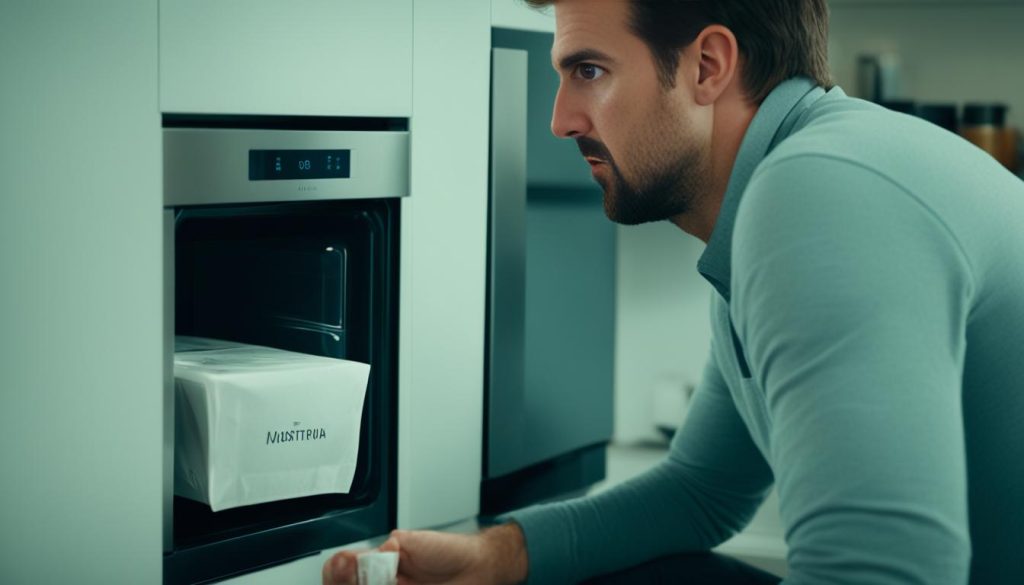
By patiently waiting for the water to reach the desired temperature and then pouring it over the tea leaves, you can ensure that the flavors are extracted properly and that you get the most out of your tea. This method also gives you more control over the steeping time, allowing you to adjust it according to your taste preferences.
So, next time you’re making a cup of tea, resist the temptation to use the microwave. Take a few extra minutes to heat the water using a kettle or stovetop and enjoy the full, rich flavors that a properly steeped tea has to offer.
Your Water is Too Hot
Using water that is too hot can lead to a bitter and less sweet taste in your tea. Different types of tea require different temperatures for optimal steeping. To avoid this common tea steeping mistake, it’s important to know the ideal water temperature for the type of tea you are brewing.
Here are the recommended water temperatures for some popular tea varieties:
| Tea Type | Ideal Water Temperature |
|---|---|
| Green Tea | 175°F (80°C) |
| Black Tea | 200°F (93°C) |
| Herbal Tea | 212°F (100°C) |
By using the correct water temperature, you can ensure the best flavor and aroma in your cup of tea. Steeping tea at lower or higher temperatures may result in a brew that is either too weak or too tannic.
Remember, controlling the water temperature is crucial for a perfect steep. Invest in a thermometer or use an electric kettle with temperature control to achieve the desired temperature for each type of tea.
You’re Steeping it for Too Long
Steeping tea for too long can result in a bitter taste as it releases tannins. Each type of tea has a recommended steeping time to achieve the perfect balance of flavor. Oversteeping not only affects the taste but also the overall quality of your brew. To ensure you have the best tea experience, here are the ideal steeping times for different types of tea:
- Green tea: 2-3 minutes
- Black tea: 4-5 minutes
- White tea: 2-3 minutes
- Oolong tea: 3-5 minutes
- Herbal tea: 5-7 minutes
These times may vary depending on personal preference and the specific tea you’re steeping. By following these guidelines, you can avoid oversteeping and enjoy a well-balanced cup of tea without any bitterness.
Understanding Tannins in Tea
Tannins are a naturally occurring class of compounds found in tea leaves. When tea is steeped for too long, these tannins are released into the brew, giving it a bitter taste. While some people may enjoy a stronger tea with an extra punch of bitterness, it’s important to steep your tea within the recommended time frame to avoid overpowering the delicate nuances of flavor.
Tea steeping is a fine art that requires patience and precision. By paying attention to the steeping time, you can enhance the flavor of your tea and enjoy a perfectly balanced cup every time.
You’re Not Steeping it Long Enough
When it comes to steeping tea, timing is crucial. Steeping your tea for the right amount of time allows the flavors and aromatic compounds to fully develop, resulting in a rich and satisfying brew. However, not steeping your tea long enough can leave you with a weak and underwhelming cup of tea.
During the steeping process, different compounds in tea are released at different stages. The initial stages release the more delicate and subtle flavors, while later stages bring out the stronger and bolder notes. By cutting the steeping time short, you miss out on these complex flavors and the full expression of your tea.
To avoid this common mistake, it’s essential to follow the recommended steeping times for the type of tea you’re brewing. Here are some general guidelines for steeping durations:
- Green tea: 1-3 minutes
- Black tea: 3-5 minutes
- Oolong tea: 3-5 minutes
- White tea: 4-6 minutes
- Herbal tea: 5-7 minutes
Keep in mind that these are just starting points, and you can adjust the steeping time based on your personal preference. If you prefer a stronger brew, you can add an extra minute or two to the steeping time.
Remember, brewing tea is an art that requires precision and patience. By steeping your tea for the appropriate duration, you’ll unlock the full potential of its flavors and create a truly enjoyable tea-drinking experience.
You’re Not Using Loose Leaf
When it comes to tea steeping, using loose-leaf tea can make a world of difference. While tea bags may offer convenience, they often contain broken tea leaves, resulting in a less flavorful brew. By opting for loose-leaf tea, you can experience a fuller flavor profile, as the intact leaves retain their essential oils that contribute to the aromatic and taste sensation.
Using loose-leaf tea allows for a more customizable and enjoyable tea steeping experience. You have the freedom to choose the desired amount of leaves and adjust the brew strength to your preference. Additionally, loose-leaf tea offers a wider variety of tea options, from classic varieties to unique blends and rare teas.
For those who still prefer the convenience of tea bags, there are alternative options available. Some brands offer pyramid-shaped tea bags that allow for more room for the tea leaves to expand and fully infuse in the water, resulting in a better flavor extraction.
Experimenting with loose-leaf tea can open up a world of tea possibilities, giving you the opportunity to discover new flavors and enjoy a more authentic tea experience. So don’t miss out on the rich and flavorful journey that loose-leaf tea can offer.
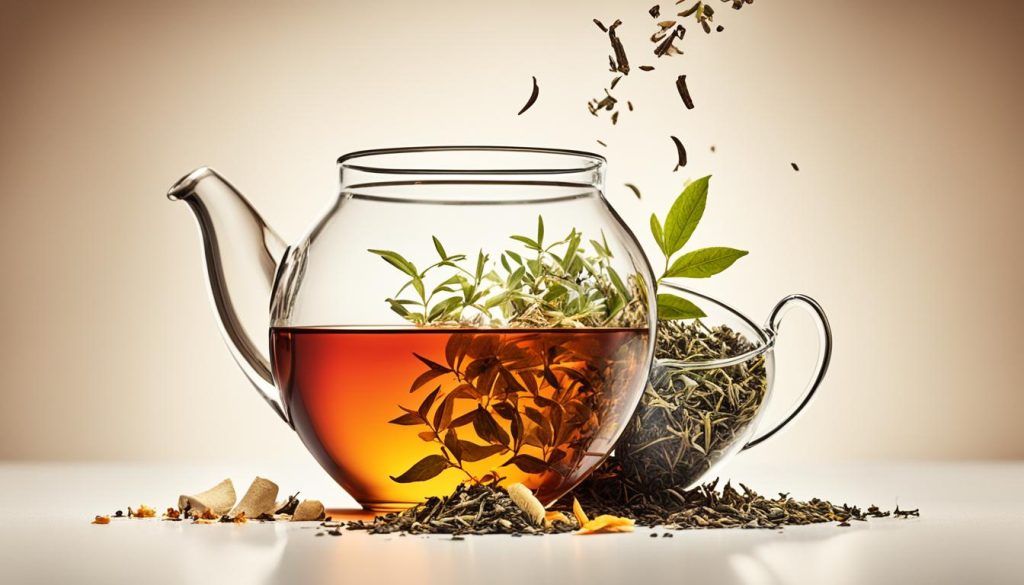
Squeezing Out Tea Bags
Squeezing tea bags to extract additional flavor is a common but misguided practice. While it may seem like a way to get the most out of your tea bags, it can actually have a negative impact on the taste and quality of your brew.
When you squeeze a tea bag, it forces out the bitter tannins and other compounds that contribute to a bitter taste. This can make your tea more bitter and less enjoyable. Additionally, squeezing the tea bag can cause the bag itself to break, releasing small particles into your brew and resulting in a cloudy cup.
Instead of squeezing your tea bags, it’s best to let them steep naturally. By allowing the water to flow through the tea leaves on its own, you’ll achieve a smoother and more balanced flavor profile. To ensure a complete infusion, gently stir the tea bag in the water a few times during steeping.
Remember, the quality of your tea is not determined by how much you can squeeze out of a tea bag. It’s important to choose high-quality tea bags or opt for loose-leaf tea for a superior tea-drinking experience.
Next, we’ll explore another common tea brewing pitfall: using the wrong type of tea bags. Stay tuned!
Using the Wrong Type of Tea Bags
When it comes to steeping tea, not all tea bags are created equal. It’s important to choose the right type of tea bag to avoid common tea steeping mistakes. Some tea bags, such as those made with plastic or bleached materials, can release harmful chemicals into your brew, compromising both the taste and your health.
At our tea shop, we recognize the significance of using high-quality tea bags. We recommend opting for non-bleached tea bags, as they are free from harmful chemicals and offer a natural and flavorful tea experience. Non-bleached tea bags ensure a chemical-free steeping process, allowing you to enjoy the true essence of the tea leaves.
When selecting tea bags, always read the packaging carefully to ensure that they are made from safe and eco-friendly materials. By avoiding plastic or bleached tea bags, you can eliminate common tea steeping blunders and create a healthier, tastier brew that you can truly savor.
